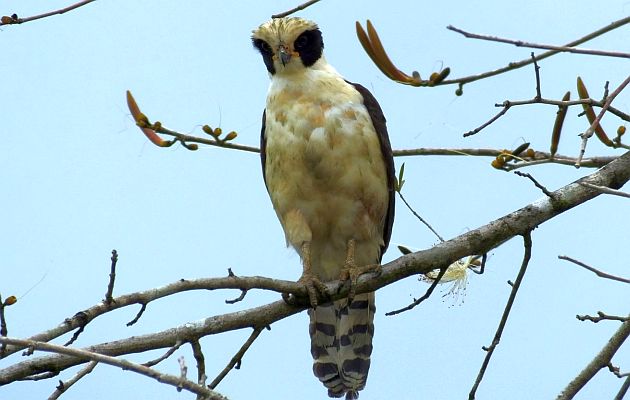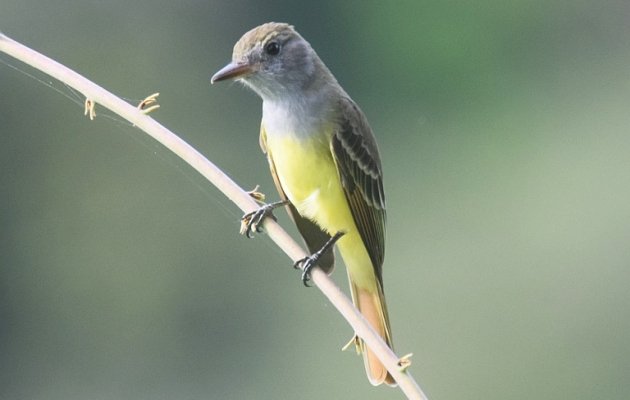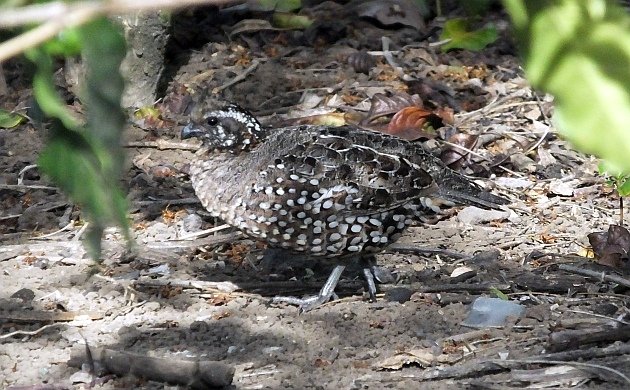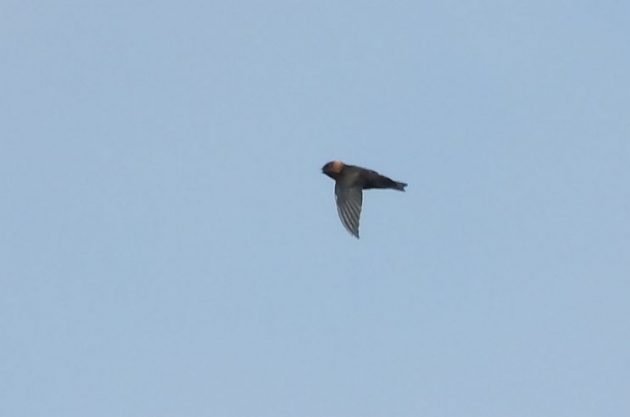
In birding circles, Costa Rica is better known for protected areas, quetzal tours, and glittering displays of hummingbirds than the things that fly in urban spots. That makes sense. I mean, who comes to Costa Rica to bird on city streets? In remnant riparian zones? In the final bits and pieces of green space that dot a typical human dominated landscape?
The birding in Costa Rica is certainly much more exciting in mature forest, in larger areas of green space. It’s the same everywhere. It’s why, while growing up in an urban situation, I always wanted to go to “the country”. In my mind, that’s where the birds and wild things were, out there in the far away places on maps and at the ends of roads. Although I knew that most of the birds and animals were in some wild, far off place, that didn’t stop me from looking for them closer to home. I didn’t really have a choice but I found a lot more than I had expected.
Rough Cooper’s Hawks, occasional harriers and other raptors flapping through the brittle November airs of a vacant weedy field. American Kestrels and cowbirds and lost Ring-necked Pheasants using that same area of grass. Blue Jays and Northern Cardinals, Downy Woodpeckers. Nighthawks in the evening summer sky, Chimney Swifts zipping over the street. During migration, the songs of occasional warblers and a Great-crested Flycatcher or two would suddenly be present.

It was also a short walk to a sliver of wild, to the veritable bird important habitats of the Niagara Gorge where hundreds, even thousands, of gulls could be seen. Seasonally, a good number of ducks were there too along with loons and other choice waterbirds. In the small city of Niagara Falls, at the edges of concrete and brick, birds were waiting to be discovered. Field guides indicated that various birds were possible, just maybe even the Bobwhite.
Those books talked about the small, cool looking quail as being a bird of scrubby fields and weedy habitats but Niagara seemed to be just a bit too far north of their range. Could they somehow make it to the fields where we played baseball? To habitats at the edge of town? As much as I wished that could be the case, we truly were just a bit too far north of their range, I could only imagine how the bobwhite might say its name.
Today, in Costa Rica, I’m too far south for the Northern Bobwhite. So far south that another, more tropical bobwhite takes its place. Known as the Crested Bobwhite, this small quail persists in any number of weedy fields, even lives on some coffee farms.

It might not look like a Northern Bobwhite but it sounds just about the same, saying its name, sometimes all day long. The one on the other side of the street has been doing that, was saying its name all last year. It’s a wonder that it keeps singing because last year’s field is steadily being tractored into becoming a residential development. Any day now, I expect the bobwhite to stop singing or (hopefully) call from coffee fields on the other side of the new gated community. For the meantime, it insists and persists in this urban landscape.
For the moment, the future of other birds in this neighborhood is a bit brighter. The pair of Barred Antshrikes that sing out back are building a nest. Red-billed Pigeons and Yellow-green Vireos sing and join a morning chorus of Rufous-naped and Cabanis’s Wrens, White-tipped Dove, and the hooting of Lesson’s Motmots. A Ringed Kingfisher makes an occasional flyby, it somehow finds food in the rushing stream out back. Brown Jays also flutter by and those are just a few of the species that still occur. This might not be “the country”, but each morning holds a surprise, each morning has its special bird.
This morning, the surprise was the call of Laughing Falcon. We have heard one now and then but it still seems out of place, seems much more like a bird of hotter, more extensive natural tropical habitats. Since it eats snakes, hearing one tells us that other hidden life is out there somewhere close by (on one 3 a.m. drive, I did see a fairly large Boa close to our place…).

The visual highlight came in the form of a mixed flock of swifts that foraged low, right over treetops to take advantage of some hidden insect hatch. Big White-collared Swifts, several Chestnut-collared Swifts, and a few locally nesting Vaux’s Swifts were joined by at least two Black Swifts (!) and either Spot-fronted or White-chinned Swifts (they didn’t call and I couldn’t see enough of their diagnostic faces to identify them).

The aerial birds zipped through the humid air, back and forth over the trees, occasionally flying close overhead. Foraging here, they become urban birds. By evening, they fly back to waterfall roosts in cloud forests of the mountains, go back to being species of the wild places, to being birds of the country.











Swift birds have a strange appearance. I am very impressed with the area around its eyes. The color looks pretty intimidating.